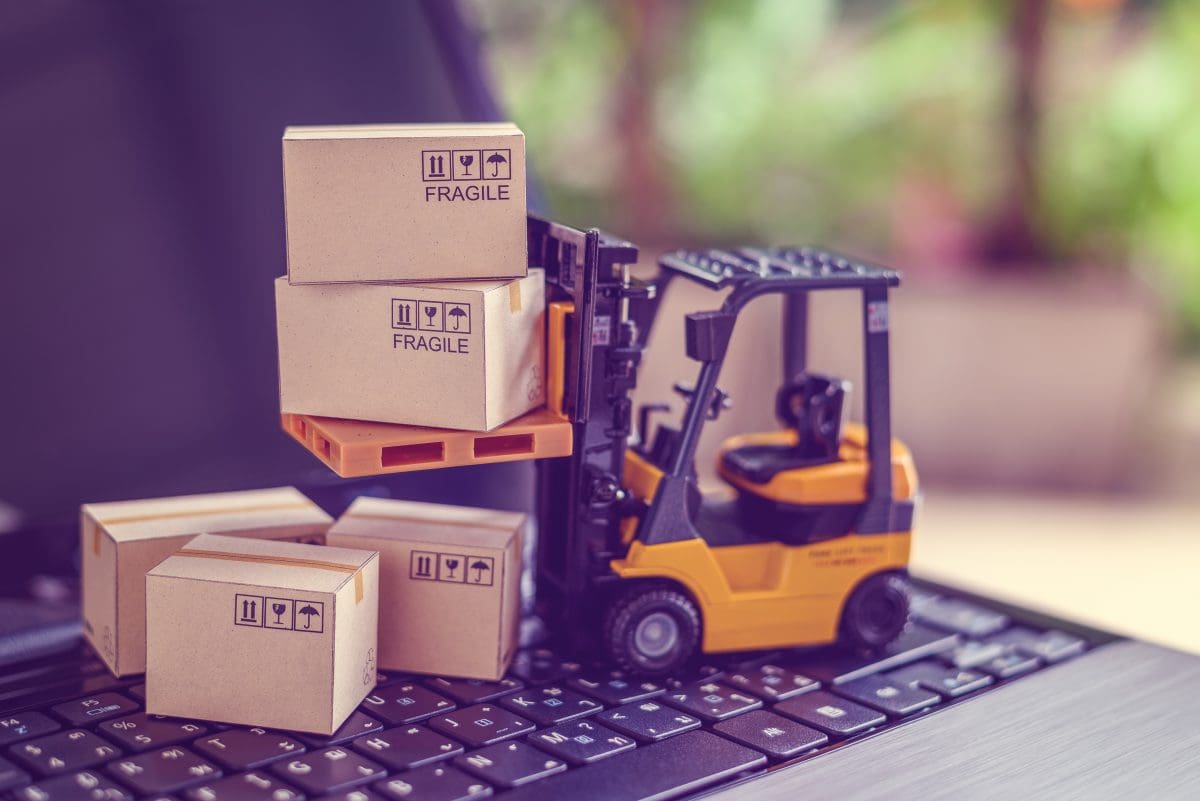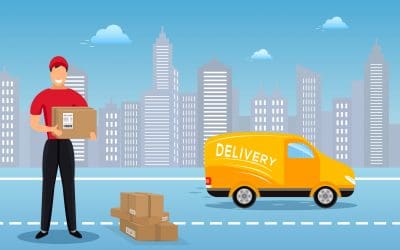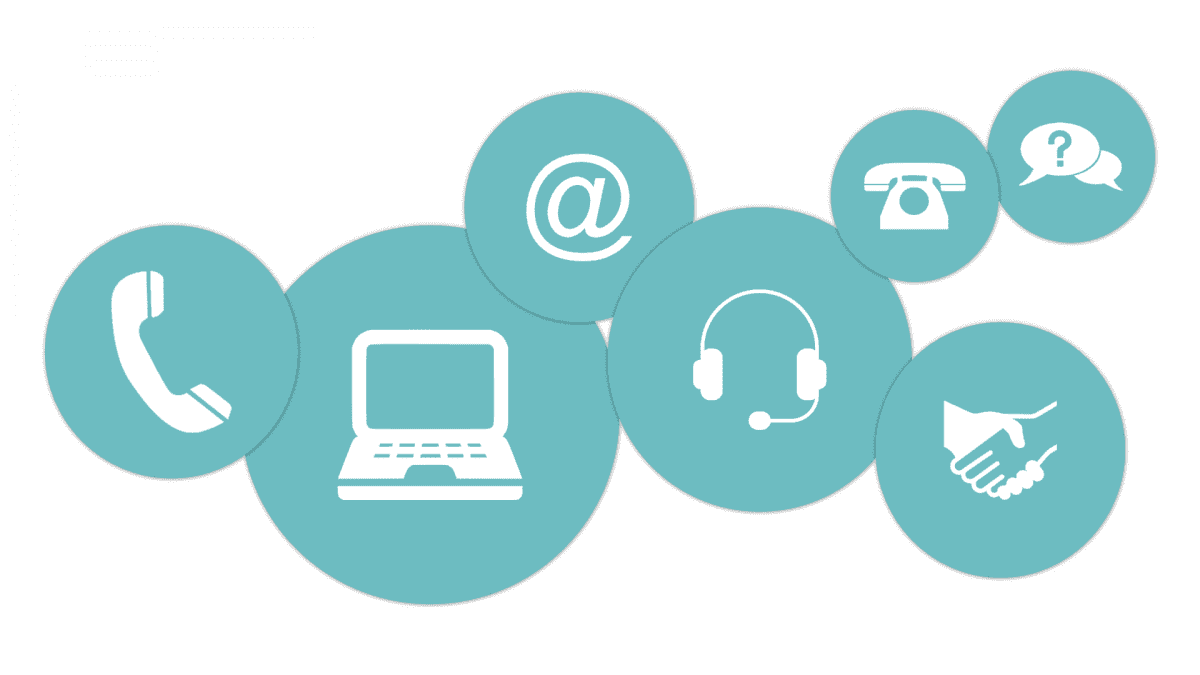
Does your company bring in purchased goods? If so, you’re using inbound logistics. But what is inbound logistics? This umbrella term covers all goods brought into a company—whether it’s raw materials from suppliers, parts from vendors, or products for retail sale.
While these activities may vary slightly, all inbound logistics efforts involve the same core areas: sourcing, ordering, receiving, storing, transporting, and managing incoming supplies.
Want a quick overview? Our table of contents will help you find exactly what you’re looking for.
- Why Do You Need Inbound Logistics?
- Top 5 Components of Inbound Logistics
- Inbound vs. Outbound Logistics
- 6 Challenges With Inbound Logistics
- Tips & Tricks
Why Do You Need Inbound Logistics?
Very few businesses operate without purchasing something to support their sales or manufacturing operations (note: inbound logistics does not include items like office supplies). Even farmers may need to buy seed, animal feed, and other essentials.
Inbound logistics is foundational to business operations, especially if your company depends on a consistent supply of goods or raw materials. Poor management of incoming supplies can lead to stockouts at critical moments, overordering and increased storage costs, or higher expenses due to delays and inefficiencies.
Proper inbound logistics involves integrating all these elements into a cohesive, well-managed system.
Top 5 Components of Inbound Logistics
Let’s explore the different components of inbound logistics. While they work together as a system, each area has unique considerations that help explain how inbound logistics functions—and why it’s essential to get it right.
Sourcing
Supply chain disruptions during the COVID-19 pandemic and events like the Ever Given incident have highlighted the importance of diversified sourcing. Sourcing involves identifying and evaluating suppliers, obtaining quotes, and negotiating terms.
Diversified sourcing ensures that if one supplier experiences issues—such as a power outage during a hurricane—you can quickly switch to an alternative provider.
One common mistake in inbound logistics is focusing solely on cost when sourcing. While buying from the lowest bidder is tempting, it’s important to also consider quality, shipping distance, and environmental or governance factors. For example, purchasing seed corn from a nearby distributor may cost slightly more but save on transportation and reduce supply chain risks.
Choosing a reputable supplier—even at a higher price—can also help avoid quality issues. Many automotive recalls, for instance, stem from faulty components sourced from third-party vendors.
Strong negotiation skills are essential to secure favorable terms and understand what each supplier offers.
Ordering and Purchasing
Ordering supplies is another critical aspect of inbound logistics. Many companies use just-in-time (JIT) inventory methods, which involve keeping only the inventory needed and purchasing regularly. This approach saves on storage and real estate costs but is vulnerable to disruptions that delay deliveries.
In retail and wholesale operations, JIT means ordering items only when a customer requests them. While this reduces waste, it can increase costs. Automated systems can help JIT run more smoothly by streamlining the ordering process and reducing human error.
For companies not using JIT, logistics professionals must determine how much to order by predicting demand. This requires time, skill, and increasingly, the use of modern systems that analyze data and forecast demand. Artificial intelligence is beginning to play a significant role in this area.

Transportation
Large companies often manage their own transportation fleets. Depending on the contract, transportation may also be handled by the vendor, who delivers goods either as a dedicated trip or as part of a planned route.
Transportation logistics includes selecting the appropriate vehicle—whether it’s a semi-truck, van, or motorbike. Even for inbound logistics, last-mile delivery may involve small shipments via courier services, including USPS.
Smaller businesses typically rely on third-party transportation providers and coordinate delivery schedules with vendors. The most cost-effective transportation option varies depending on the type of goods and your location. Businesses in densely populated areas may share delivery vehicles, while those in remote locations might hire smaller vehicles for dedicated deliveries.
Receiving
Receiving involves unloading deliveries and checking inventory. In JIT systems, received goods may be immediately reloaded for outbound delivery, but they still must go through the receiving process.
Proper receiving includes verifying that the shipment matches the order and inspecting for visible defects. Goods are then moved to storage. Most companies use barcodes or RFID chips to track inventory, with RFID becoming increasingly popular for automating parts of the receiving process. However, human oversight remains essential.
Many businesses also incorporate quality assurance into receiving, such as pulling samples for testing.
Storage
Unless goods are immediately used in production or shipped to customers, they need to be stored. Minimizing storage space is ideal—but not at the expense of running out of essential inventory.
The term “putaway” refers to moving goods from the receiving area to storage. Some items may be staged near production lines for easy access by employees or robots.
It’s crucial to ensure goods are stored in the correct location and under appropriate conditions. For example, meat must be kept at the right temperature to prevent spoilage.
While storage needs vary by industry, the core principles remain the same: inbound logistics means acquiring the right items, in the right quantity, transporting them efficiently, and storing them properly.
Inbound vs. Outbound Logistics
Logistics encompasses all movement of goods. However, inbound logistics should not be confused with outbound logistics, even though some activities—such as drop shipping—may involve both.
Outbound logistics refers to moving finished products from the company to the customer. This could be a retail store or the end user. It includes preparing orders, adjusting stock levels, picking items from a warehouse, packing, loading, and transportation.
While the basic distinction is directional—inbound brings goods in, outbound sends goods out—the two are interconnected. You can’t manage inbound logistics effectively without monitoring outbound logistics to understand historical and projected demand.
Transportation challenges are common to both, but outbound deliveries to end users are more likely to rely on couriers or USPS for last-mile delivery.
Want more industry insights?
Subscribe to our newsletter to receive weekly last mile logistics insights directly to your email inbox each week!
Challenges of Inbound Logistics
Inbound logistics can be complex, and mismanagement can lead to waste, increased costs, and reduced product quality. Here are some of the most common challenges:
Delivery Surges
Without proper planning, you may experience delivery surges—too many shipments arriving at once. This can overwhelm receiving docks, confuse drivers, overwork staff, and lead to misplaced or lost shipments, including those meant for immediate outbound delivery.
Predicting surges can be difficult, though some are predictable, such as pre-holiday retail spikes. Warehouse management software can help forecast and manage these surges by rescheduling routine shipments or hiring temporary staff. For daily surges, consider spreading deliveries throughout the day or consolidating smaller shipments.
Supplier Reliability
As mentioned earlier, choosing the cheapest supplier isn’t always wise. You need reliable suppliers—and backup plans in case they become unreliable. Finding and maintaining dependable suppliers is challenging.
Ensure timely payments, renegotiate contracts when necessary, and verify quality certifications. Continuously assess supplier risks, including weather, labor relations, and political factors like tariffs and trade policies. Always have alternative suppliers ready.
Your product’s quality depends on the quality of its components and raw materials, so supplier reliability is critical.
High Costs
Production costs are heavily influenced by shipping and supply expenses. To remain competitive and profitable, you must reduce inefficiencies.
Use the most cost-effective shipping methods and negotiate favorable rates with preferred carriers. Leverage analytics to identify waste and optimize spending.
Match supply with demand to avoid excess inventory. Remember, product recalls are costly—another reason to prioritize quality and reliable suppliers.
Qualified Labor
While automation can streamline some logistics tasks, qualified labor is still essential. Finding skilled drivers and warehouse workers can be difficult, especially in competitive markets.
Work with your HR team to attract and retain talent. Offer competitive pay and benefits, but also focus on workplace culture. A strong safety culture reduces injuries and turnover. Providing training opportunities helps retain high-performing employees. Don’t hesitate to part ways with underperformers.
Supply Chain Transparency
Do you know where your incoming goods are? Supply chain transparency is increasingly important. Operating in an information vacuum can leave you unaware of shipment locations or delays.
Maintain open communication with vendors and shippers. Automated tracking systems can help monitor shipments and provide data to improve routing and order accuracy. This should be a collaborative process—third-party transportation providers are just as invested in optimizing delivery routes as you are.
Sustainability and Ethics
Reducing fuel consumption not only cuts costs—it also supports sustainability. As customers demand more ethical production practices, businesses must respond.
This may involve setting supplier guidelines, shortening supply routes, and collaborating with partners to improve sustainability. While environmental challenges persist, sustainability remains a long-term priority and is generally good for business.
Useful Tips to Optimize Inbound Logistics
Here are some practical tips to improve your inbound logistics and reduce costs:
- Use real-time tracking and analytics to optimize routes and prepare for incoming freight—even if shipments are delayed.
- Negotiate with suppliers for favorable terms, but avoid choosing based solely on price.
- Schedule deliveries to prevent bottlenecks.
- Consolidate shipments whenever possible.
- Maintain a list of alternate suppliers and diversify your supply chain.
- Use analytics to rightsize orders and avoid just-in-time methods unless they truly suit your business.
- Collaborate with suppliers to improve quality, sustainability, and transparency.
Inbound logistics is essential for every business—but not all companies manage it effectively. Optimizing your inbound logistics improves product quality, speeds up outbound orders, saves time, and boosts your bottom line.
Pay close attention to every aspect of inbound logistics and consider automation tools to track shipments, analyze data, and place orders efficiently. Elite EXTRA can help streamline your logistics operations and ensure you get the most out of your process. Contact us today to learn how our logistics software can support your business.
Sources
Inbound Logistics: Definition, Examples, and Process
https://www.forbes.com/advisor/business/just-in-time-inventory
https://www2.deloitte.com/content/dam/insights/us/articles/supply-chain-transparency/DUP785_ThePathtoSupplyChainTransparency.pdf







